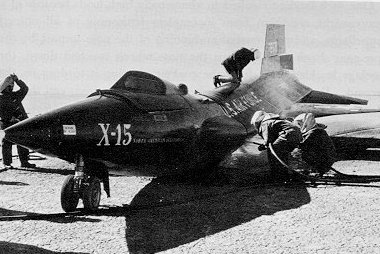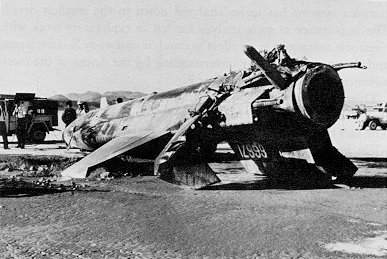
|
| The entire present team of X-15 research pilots includes, from left to right, John B. McKay (NASA), Joseph A. Walker (NASA), Milton O. Thompson (NASA), Maj. Robert A. Rushworth (USAF), and Capt. Joe H. Engle (USAF). Previous X-15 pilots at various times were A. Scott Crossfield (NAA), Neil A. Armstrong (NASA), Lt. Comdr. Forrest S. Petersen (USN), and Maj. Robert M. White (USAF). |





